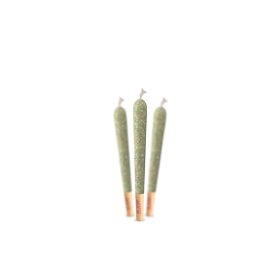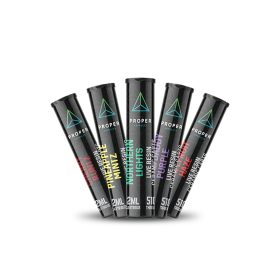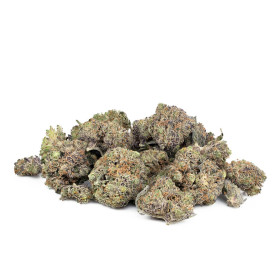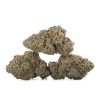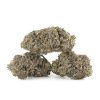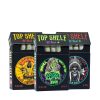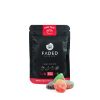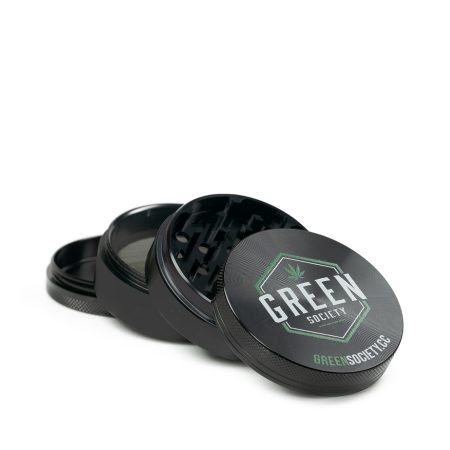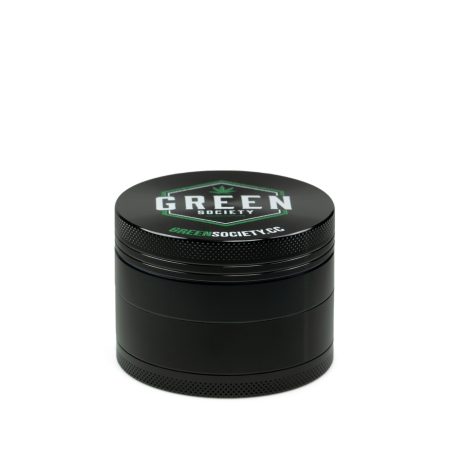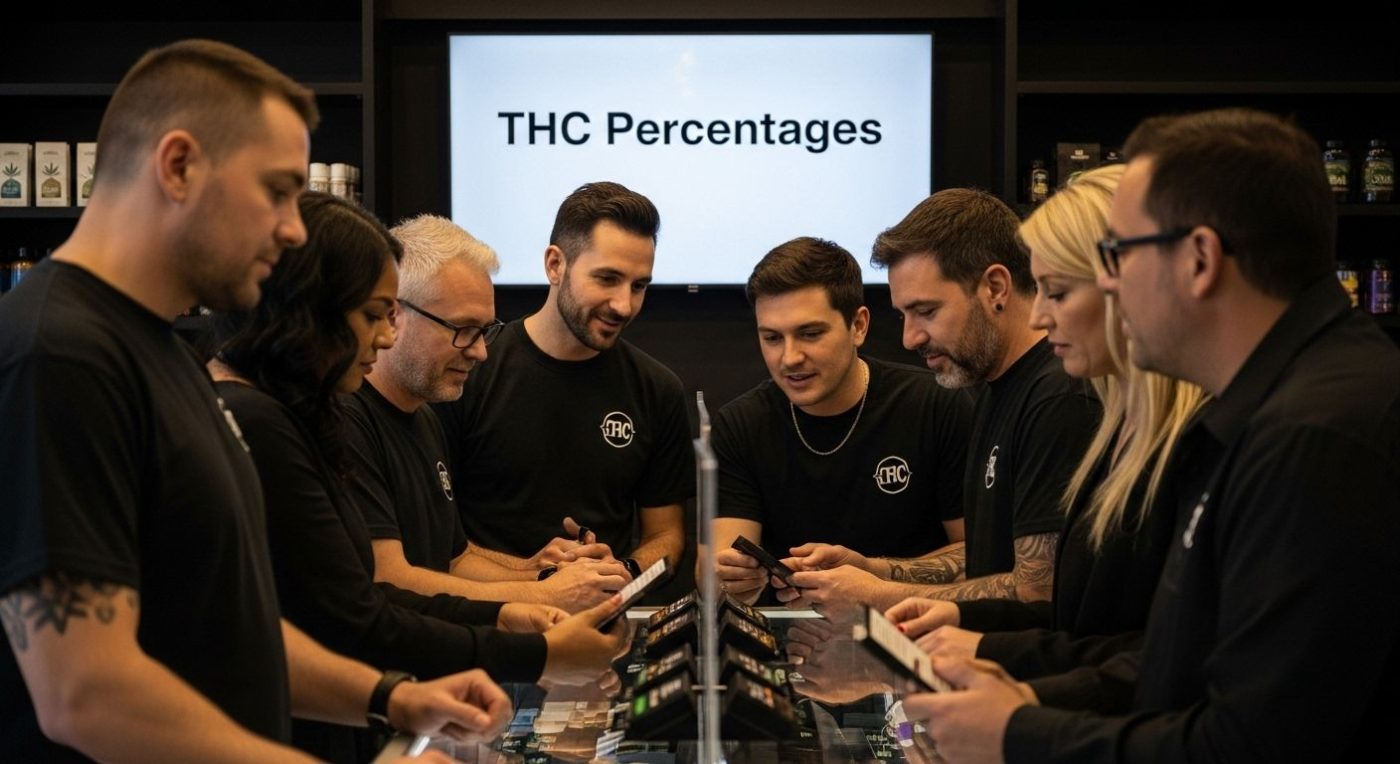Marijuana
Understanding THC Percentages: A 2025 Guide for Cannabis Shoppers
Cannabis shoppers see numbers like 15 or even 30 percent THC on labels all the time and think those stats hold the secret to their next experience. Yet the average THC content in cannabis flower has jumped from just 3.96 percent in 1995 to 16.14 percent in 2022. Wild, right? But higher numbers do not guarantee the ride you expect. There is a lot more to understanding strength than just chasing the highest percentage.
Table of Contents
- What Thc Percentages Really Mean
- How Thc Levels Affect Your Experience
- Comparing Thc In Edibles, Flowers, And Oils
- Choosing The Right Thc Percentage For You
Quick Summary
| Takeaway | Explanation |
|---|---|
| Understand THC percentages for informed choices | THC percentage indicates the potency of cannabis products, helping consumers gauge their potential effects on the body. |
| Start low and go slow | Beginners should start with low THC concentrations and increase gradually to manage effects effectively. |
| Consumption method affects experiences | Different methods, like smoking versus edibles, can alter the onset and duration of THC effects significantly. |
| Personalize your THC strategy | Assess personal tolerance and desired outcomes to choose the right THC percentage for your cannabis use. |
| Be aware of product variations | Different cannabis forms (edibles, flowers, oils) contain varying THC levels, necessitating careful selection and dosage management. |
What THC Percentages Really Mean
Understanding THC percentages is crucial for cannabis consumers looking to make informed purchasing decisions. THC (tetrahydrocannabinol) represents the primary psychoactive compound in cannabis that determines the product’s potency and potential effects. When you encounter a THC percentage on a product label, you’re seeing the concentration of this key cannabinoid by dry weight.
The Science Behind THC Measurements
Historically, cannabis products have seen a significant transformation in potency. Research from the National Institute on Drug Abuse reveals a dramatic increase in THC content, with average levels rising from approximately 4% in the 1990s to over 15% in contemporary products. This evolution reflects advanced cultivation techniques and selective breeding practices aimed at producing more potent cannabis strains.
The measurement process is straightforward yet precise. Cannabis laboratories analyze dried plant material or concentrated products to determine the exact percentage of THC present. A product labeled as 20% THC means that 20 grams of THC exist in every 100 grams of the cannabis product. This standardized measurement helps consumers understand the potential intensity of their cannabis experience.
Interpreting THC Percentages for Consumers
Navigating THC percentages requires understanding their practical implications. A comprehensive review in the Journal of Cannabis Research highlights that THC percentages are more nuanced than simple numbers. While higher percentages typically suggest stronger psychoactive effects, individual experiences can vary significantly based on factors like personal tolerance, consumption method, and individual biochemistry.
Generally, cannabis products can be categorized as follows:
- Low THC (0-10%): Mild effects, suitable for beginners or those seeking minimal psychoactive experience
- Medium THC (10-20%): Moderate potency, balanced effects for intermediate users
- High THC (20-30%): Intense psychoactive experience, recommended for experienced consumers
- Very High THC (30%+): Extremely potent, potentially overwhelming for most users
Consumers should approach THC percentages as a guide rather than a definitive predictor of their experience. Factors like terpene profile, individual metabolism, and consumption method significantly influence the overall cannabis interaction. A thoughtful approach involves starting with lower percentages and gradually exploring higher potency products as personal comfort and tolerance develop.
Understanding THC percentages empowers consumers to make educated choices aligned with their desired experience and personal tolerance levels. By considering these nuanced measurements, individuals can navigate the complex world of cannabis products with greater confidence and awareness.
To help clarify how THC percentages correspond to experience levels and suggested user types, here’s a summary table of THC percentage ranges and their common implications:
| THC Percentage Range | Potency Level | Typical Effects | Recommended For |
|---|---|---|---|
| 0-10% | Low | Mild relaxation, minimal psychoactive | Beginners, sensitive users |
| 10-20% | Medium | Moderate, balanced psychoactive | Intermediate users |
| 20-30% | High | Strong, intense psychoactive | Experienced consumers |
| 30%+ | Very High | Extremely potent, overwhelming for most | Experts only |
How THC Levels Affect Your Experience
THC levels play a critical role in determining the overall cannabis experience, influencing everything from physical sensations to psychological states. Understanding how different THC concentrations impact your body and mind can help you make more informed consumption choices and manage potential effects more effectively.
Physiological and Psychological Impact
Research from the National Institute on Drug Abuse reveals that THC directly interacts with brain regions controlling memory, emotions, and judgment. At different concentration levels, cannabis can produce a wide range of experiences. Lower THC percentages typically create mild, manageable effects, while higher percentages can trigger more intense psychological and physiological responses.
Typical effects across THC concentration ranges include:
- Mild Effects (Low THC): Subtle relaxation, slight mood elevation
- Moderate Effects (Medium THC): Enhanced sensory perception, increased creativity
- Strong Effects (High THC): Potential anxiety, altered time perception, significant cognitive changes
Consumption Method and Duration
The National Academies of Sciences, Engineering, and Medicine highlight significant variations in THC absorption and effect duration depending on consumption method. Smoking delivers rapid THC absorption, with effects felt within minutes and lasting 1 to 3.5 hours. Edibles present a markedly different experience, with delayed onset of 30 minutes to 2 hours and prolonged effects lasting 5 to 8 hours.
This variation underscores the importance of understanding not just THC percentage, but also consumption method. The same THC percentage can produce dramatically different experiences based on how the cannabis is consumed.
To better compare how consumption methods influence the onset and duration of THC effects, see the table below:
| Consumption Method | Onset Time | Duration of Effects |
|---|---|---|
| Smoking/Vaping | Within minutes | 1 – 3.5 hours |
| Edibles | 30 min – 2 hours | 5 – 8 hours |
| Concentrates | Seconds – minutes | 1 – 3.5 hours |
Safe Consumption Strategies
Cornell Health recommends a cautious approach to cannabis consumption, particularly with higher THC levels. Their guidance emphasizes the “start low and go slow” principle. For beginners or those exploring higher THC products, practical strategies include:
- Start with minimal doses (2.5 mg THC for edibles)
- Wait and assess effects before consuming more
- Choose consumption methods you can comfortably control
- Be aware of personal tolerance and potential sensitivity
Individual responses to THC can vary widely based on factors like metabolism, previous cannabis experience, and personal biochemistry. What produces a pleasant, manageable experience for one person might feel overwhelming for another. Responsible consumption involves self-awareness, careful dosage management, and understanding your personal limits.
Comparing THC in Edibles, Flowers, and Oils
Cannabis consumers encounter THC across multiple product formats, each with unique potency characteristics and consumption experiences. Understanding the THC variations between edibles, flowers, and oils helps individuals make more informed purchasing decisions and manage their cannabis consumption effectively.
THC Content Variations Across Product Types
Research from the Washington State Liquor and Cannabis Board provides critical insights into THC concentrations. Cannabis flower typically ranges between 15-20% THC, with some advanced strains reaching up to 35%. In contrast, concentrated products like wax, rosin, and hash oil demonstrate dramatically higher potency, spanning 60-90% THC content.
The National Institute on Drug Abuse highlights the remarkable evolution of cannabis potency. Average THC content in flower has dramatically increased from 3.96% in 1995 to 16.14% in 2022, reflecting significant advances in cultivation and breeding techniques.
Product-Specific THC Measurement
Each cannabis product type requires a distinct approach to THC measurement:
- Flower: Measured as a percentage of dry weight
- Oils and Concentrates: Measured as percentage of total product volume
- Edibles: Measured in milligrams per serving
A comprehensive study in the Journal of Cannabis Research revealed fascinating variations in edible THC content. Recreational market edibles exhibited remarkable diversity, with THC ranges from 5 to 7,000 mg per package. Notably, regulatory standards typically limit individual servings to 10 mg and total package content to 100 mg.
Consumption Considerations
The diverse THC concentrations across product types necessitate careful, personalized consumption strategies. Factors like individual tolerance, desired effects, and consumption method significantly influence the overall experience. For those seeking more precise dosing, learn more about cannabis product selection, which can help guide your choices.

Concentrate users should exercise particular caution, as high-potency products can deliver intense experiences even in small quantities. Edible consumers must be especially mindful of delayed onset times and cumulative effects. Flower remains the most traditional and often most predictable consumption method for those developing their cannabis understanding.
Responsible consumption involves understanding not just THC percentages, but also personal tolerance, desired outcomes, and potential interactions with individual biochemistry. Each product type offers unique benefits and challenges, making education and careful approach essential for a safe, enjoyable cannabis experience.
To help you compare typical THC content and key characteristics of popular cannabis product types, see the following summary table:
| Product Type | Typical THC Content | Measurement Approach | Notes |
|---|---|---|---|
| Flower | 15–20% (some up to 35%) | % of dry weight | Traditional, predictable onset |
| Oils/Concentrates | 60–90% | % of total product volume | Highly potent, rapid onset |
| Edibles | 5–100 mg per serving | mg per serving | Delayed onset, long duration |
Choosing the Right THC Percentage for You
Selecting the appropriate THC percentage is a personal journey that requires careful consideration of individual factors, experience level, and desired outcomes. Understanding how to match THC potency with your specific needs can significantly enhance your cannabis experience while minimizing potential adverse effects.
Assessing Personal Tolerance and Experience
Cornell Health recommends a cautious approach to THC consumption, emphasizing the importance of starting low and progressing slowly. For beginners, this means beginning with minimal THC concentrations. A recommended starting point is 2.5 mg for edibles or a single inhalation when smoking or vaping.
Your personal THC tolerance depends on several key factors:
- Previous cannabis experience
- Individual metabolism
- Body weight and composition
- Frequency of cannabis use
- Desired effects (medical vs. recreational)
Understanding Risk and Dosage
A study published in PubMed introduces the concept of a ‘standard THC unit’ of 5 mg to help consumers more effectively gauge and control their intake across different cannabis products. This standardization provides a helpful benchmark for managing consumption.
The Washington State Liquor and Cannabis Board warns that higher THC concentrations increase the likelihood of negative health effects. Their guidance emphasizes the importance of understanding product potency to make informed choices and reduce potential risks.
Personalized Consumption Strategy
Developing a personalized THC consumption strategy involves progressive exploration and self-awareness. Explore our product selection guide to help you navigate different THC percentages and find the right fit for your needs.
Key recommendations for choosing the right THC percentage include:
- Start with low THC percentages (5-10%)
- Increase gradually and incrementally
- Keep a consumption journal to track effects
- Pay attention to your body’s response
- Consult healthcare professionals for personalized advice
Remember that cannabis affects everyone differently. What works for one person may not work the same way for another. Patience, self-observation, and a cautious approach are crucial in finding your ideal THC percentage. By understanding your personal limits and listening to your body, you can create a safe and enjoyable cannabis experience tailored to your unique needs.
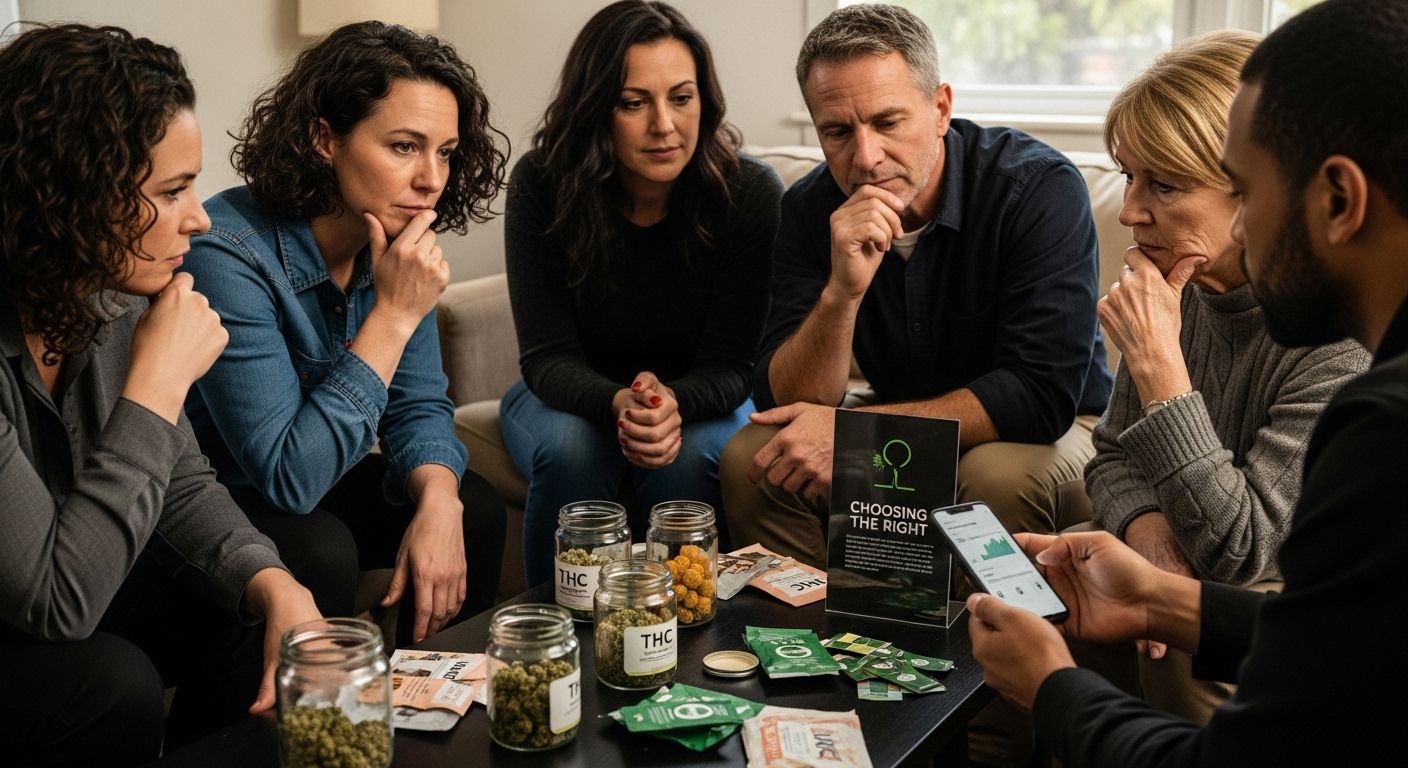
Frequently Asked Questions
What does the THC percentage indicate on cannabis products?
The THC percentage represents the concentration of tetrahydrocannabinol, the primary psychoactive compound in cannabis. It helps consumers gauge the potency of the product and its potential effects on the body.
How do different consumption methods affect THC experiences?
Consumption methods significantly influence the onset and duration of THC effects. Smoking typically results in rapid effects that last 1 to 3.5 hours, while edibles have delayed onset times of 30 minutes to 2 hours, with effects lasting 5 to 8 hours.
What is the recommended THC percentage for beginners?
Beginners should start with low THC concentrations, typically in the range of 0-10%. This facilitates a mild experience, allowing individuals to gauge their tolerance before progressing to higher concentrations.
How do THC levels in edibles compare to flowers and oils?
Edibles generally have a range of 5 to 100 mg of THC per serving, while cannabis flowers typically contain 15-20% THC, and concentrates can range from 60-90% THC. This variation necessitates careful dosing and mindful consumption strategies.
Shop Smarter: Discover Your Ideal THC Products With Confidence
Are you feeling overwhelmed by THC percentages and struggling to choose the right products for your needs? Many shoppers want to understand strength and avoid unwanted effects, but navigating terms like potency, tolerance and dosage can be confusing. Whether you are aiming to find a smooth entry point or looking to explore high-THC items safely, reliable guidance and trusted products are essential.
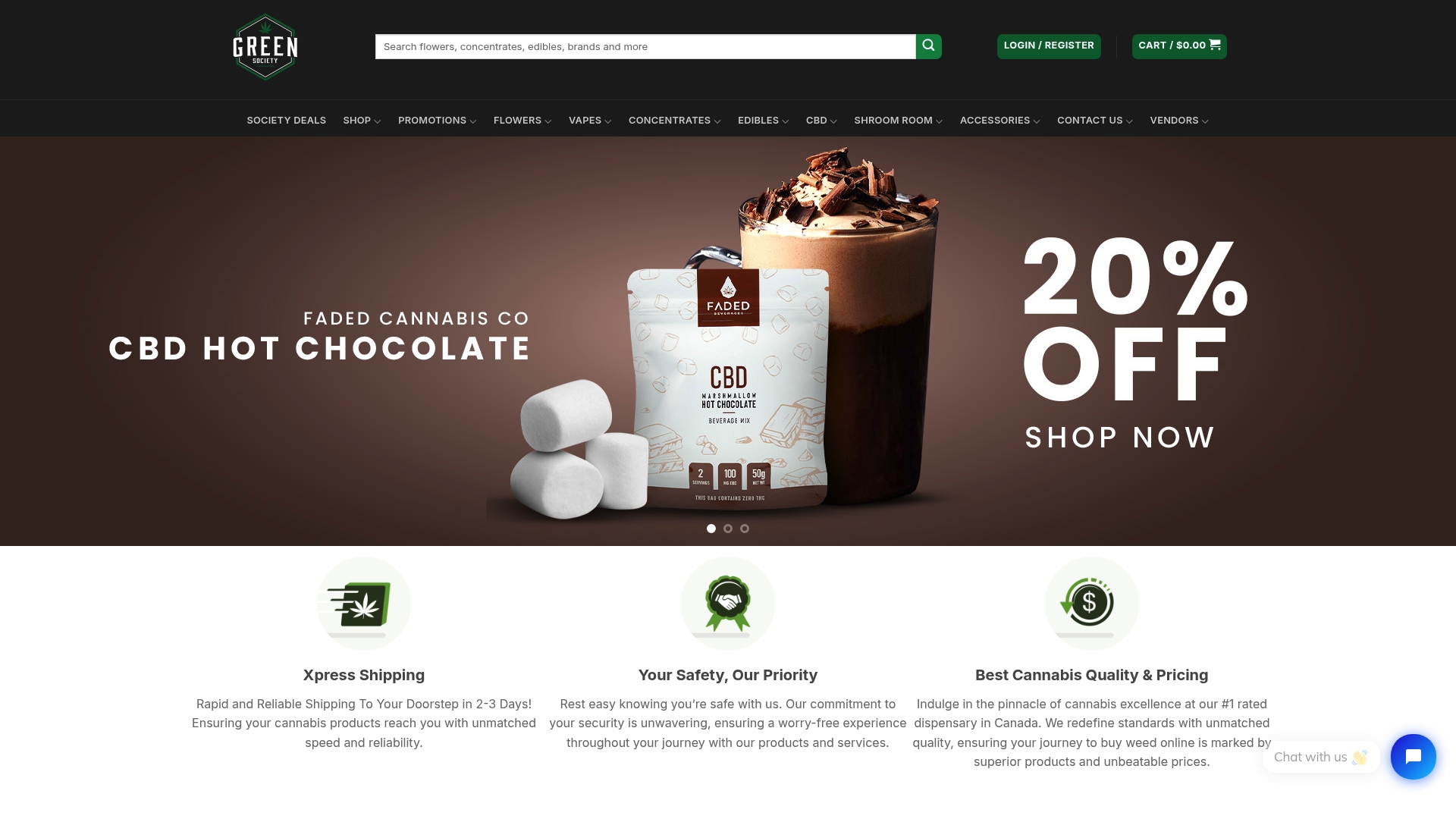
Take control of your cannabis experience today with GreenSociety.cc. Our user-friendly platform presents clear THC details for all flowers, edibles and concentrates, helping you make informed choices that match your knowledge from this guide. Explore our latest deals and browse curated selections designed for every level of experience. Shop now and enjoy quick, discreet delivery right to your door. Worried about finding the right fit for your personal tolerance? Visit GreenSociety.cc and start your journey toward confidence and comfort with every order.
Recommended
- Contact Us | Buy Weed Online Canada | Green Society
- Ganja Edibles THC Brownies | Buy Edibles Online | Green Society
- Live Resin – Krazy Glue | Buy Concentrates Online | Green Society
- BuudaBomb Watermelon Blast Gummies | Buy Edibles | Green Society

